by Lorri | Apr 10, 2013 | UnCorked
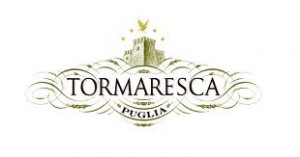 Located in the heel of southern Italy’s boot, Puglia (known as Apulia in English) is undergoing a renaissance in wine production. Unfamiliar to many wine drinkers, the region is proving to be a great source of well-made wines with amazing value. These are a few of my notes after a recent tasting of this gem of Italian wines.
Located in the heel of southern Italy’s boot, Puglia (known as Apulia in English) is undergoing a renaissance in wine production. Unfamiliar to many wine drinkers, the region is proving to be a great source of well-made wines with amazing value. These are a few of my notes after a recent tasting of this gem of Italian wines.
Tormaresca, the estate of the Antinori family in Puglia, means “Tower by the Sea.” The family has two properties in Puglia, one in the south named the Salento region and the other in the north, located in Castel del Monte. The Puglia region has a rich history of culture and gastronomy integrally linked to the sea.
The Antinori family built Tormaresca in 1998, with the goal of creating wines that would be the finest expression of the region’s viticulture. The family, whose winemaking roots date to the 14th century, hopes that by investing in this region and emphasizing the strength of the grapes growing naturally there, that the world will be reacquainted with the quality, integrity and consistency of the areas’ wines. Blending technological innovation with centuries-old vinification techniques, the Antinoris are providing a modern interpretation of vines as old as the land they grow on.
THE VALUE
- 2011 Tormaresca Neprica, Italy (about $12 retail)
At first glance of the label I thought I was going to taste a grape named Neprica I’d never tried. It turns out it isn’t the name of a single grape but an acronym for a blend of grapes. It’s from the first letters of each varietal: NEgroamaro (40 percent), PRImitivo, also known as zinfandel (30 percent), and CAbernet sauvignon (30 percent). Most of the grapes are familiar but Negroamaro is an indigenous grape. This trio makes for a robust red wine that pairs easily with food, like most Italian wines.THE SPLURGE
- Tormaresca Torcicoda IGT, Italy (about $22 retail)
Those who adore California zinfandel will be a huge fan of this wine. It’s 100 percent Primitivo and is layered with all the spices, fruits and full-bodied flavors you would expect. This grape has been growing in southern Italy for centuries.
by Lorri | Apr 3, 2013 | Tips, UnCorked
 I am sure we could search century-old cellar journals and find early versions of the longstanding question of when is the best time to open a bottle of wine. It’s really rather a conundrum because if you pull the cork too early you’re left with a tannic, acidic wine. Open too late and most likely nothing is left except a dried-out fruitless wine. And worse, if you open years past the appropriate life of the wine you’re stuck with a bottle of vinegar.
I am sure we could search century-old cellar journals and find early versions of the longstanding question of when is the best time to open a bottle of wine. It’s really rather a conundrum because if you pull the cork too early you’re left with a tannic, acidic wine. Open too late and most likely nothing is left except a dried-out fruitless wine. And worse, if you open years past the appropriate life of the wine you’re stuck with a bottle of vinegar.
I wish there was a magic calculation to come up with the right date to open our slumbering bottles. But that magic formula doesn’t exist. So, I offer these general guidelines for those who are questioning whether to pop the cork, or not.
Many wines are saved long past their viable life simply because of the owner’s perception of the wine label. I am asked a lot to quickly survey a collection and to offer advice regarding when certain wines are (or will be) ready to drink. A recurring theme is that the attractive French Bordeaux label leads owners – many of whom receive the bottles as gifts – to think they have a wine that should be aged longer than is necessary. A general rule is French labels stating the general and broad category of “Bordeaux AC” are best consumed within one to two years.
Opening any bottle that has been aging is a hit or miss proposition, especially if you only have one bottle. If you are serious about collecting I recommend buying by the case or at least three bottles. This helps you to determine exactly where the wine is in its maturity and offers you the opportunity to taste it in stages. If you have a case, open one bottle soon after you buy it so you have an indication of where the wine is in the aging process. Take notes and re-visit another bottle later to see how the wine is changing.
Red wines generally agewell because of tannins, the chemical substance that creates the pucker power in a young red wine, which has preservation properties. But keep in mind it’s a myth that a harsh tannic, unbalanced red wine only needs to be kept long enough to become a great wine. The same wine five years down the road will likely still be harsh and unbalanced. The same is true of the widespread thinking that young red wines in balance will not improve or change with time.
Color is one of the best gauges for red or white wines. If you are looking at a young red wine (depending on the grape) it will generally have a more purple rim color. As the pigments oxidize they are precipitated along with the tannins becoming more ruby and then gradually a brownish color. Storage conditions, the grape and method of production can also have color impact.
FOR NOW
- 2010 Swinto Old Vine Malbec, Argentina (about $40 retail) to keep for a couple of years.
FOR LATER
- 2007 Bell Vineyards Clone 6, California (about $80 retail) to taste now and until perfection, approximately 8 to 10 years.
by Lorri | Mar 27, 2013 | UnCorked
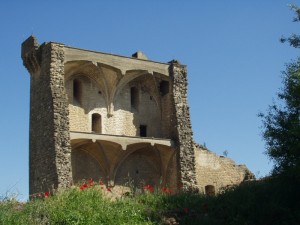 I enjoy wine, but sometimes I am so intrigued by the story behind the bottles that the actual tasting takes second seat. Chateauneufdu-Pape is one of those stories, a worthy centerpiece for France’s southern Rhone, with its distinctly embossed bottle boasting the old papal coat of arms.
I enjoy wine, but sometimes I am so intrigued by the story behind the bottles that the actual tasting takes second seat. Chateauneufdu-Pape is one of those stories, a worthy centerpiece for France’s southern Rhone, with its distinctly embossed bottle boasting the old papal coat of arms.
It’s home to an ancient papal village just north of Avignon possessing a certain and memorable aura.
The first of the Avignon popes, Clement V was installed as pope in 1305. Because of strained relations with the king of France, the Rome papacy and politics in general, the pontiff moved the papal residence to Avignon in 1309, where it remained until 1377.
While Clement gets credit for moving the papacy, it was his successor, Pope John XXII, who was responsible for the progress of the regional vineyards’ prosperity. John was a romantic and longed to retire from the bustle of Avignon to the tranquility of the countryside. A formal retreat was sought and Chateauneuf, complete with a castle that had been ruined, was an ideal choice. Construction of the retreat was started in 1318 and, even with the affluent standards of the time, was a monster endeavor. John was only ableto live in Chateauneuf for a year before his death.
The vineyard prospered for many years but the even tual return of the papacy to Rome and later the devasta tion by phylloxera led to its decline.
In 1923, a monumental shift in the history of wine occurred with increased notoriety of French wines Baron Pierre Le Roy de Boi seaumarie (who deserves credit for changing the wine industry to what we know today) spearheaded a move ment that led to the French system of regulation.
He wanted to safeguard the wines of Chateauneuf du-Pape from the many abuses going on in the busi ness. His six stipulations were monumental for the time: a natural delimitation of the area to be planted only specific grapes to be planted, regulations of prun ing and training, minimum alcohol level of 12.5 percent (this is still the highest min imum level in all of France)specific harvest details, no rose production, and wine failing to pass the tasting panel would not be sold as Chateauneuf-du-Pape. These conditions remain largely unchanged today.
So to answer the question I am asked each year around this time, what wine will I be serving at Easter? Chateauneuf-du-Pape is an easy choice after you know the story.
THE LITTLE SPLURGE
- 2010 Clos de L’Oratoire Des Papes, France (about $53 retail)
THE BIG SPLURGE
- 2010 Domaine du Vieux Telegraphe, France (about $95 retail)
by Lorri | Mar 20, 2013 | Annual Reviews, UnCorked
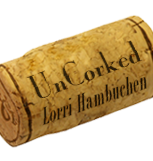 It’s hard to believe I have been writing Uncorked for eight years. I absolutely love sharing ideas each week, but more importantly I enjoy the feedback from you, the reader.
It’s hard to believe I have been writing Uncorked for eight years. I absolutely love sharing ideas each week, but more importantly I enjoy the feedback from you, the reader.
As I celebrate this anniversary, I am reminded my aim for this column has always been to offer honest recommendations of wines we can find in our market. But more than the recommendations, I hope this column makes wine – an often pretentious and confusing subject – fun to learn about and more enjoyable to drink.
This next year as we continue our wine journey together, I want to add a few interactive features to the column. Keep an eye out for a few “homework” lessons involving tasting wines together. You’re the reason I write the column, and your thoughts, questions and suggestions about what you want to know help me immensely. Keep the questions and suggestions coming!
As I do each year, I have put together a complete list of values and splurges featured in this column in the past year. Just send an e-mail or written request to this mailing address and I’ll send you a copy; e-mail uncorked@lorrihambuchen.com or write to Uncorked, c/o the Arkansas Democrat-Gazette, P.O. Box 2221,Little Rock, Ark. 72203.
A few of my favorites from the past year:
THE VALUES
- 2011 Wishing Tree Unoaked Chardonnay, Australia (about $13 retail)
- 2011 Root 1 Chardonnay, Chile (about $12 retail)
- 2010 Cline Cellars Cashmere, California (about $15 retail)
- 2011 Big House Red Boxed Wine, California (about $22 retail)
THE SPLURGES
- 2011 Presqu’ile Pinot Noir, California (about $49 retail)
- 2006 Reynolds Family Winery Persistence, California (about $58 retail)
- 2007 Bell Vineyards Napa Valley Claret, California (about $69 retail)
- 2009 Rombauer Carneros Chardonnay, California (about $49 retail)
by Lorri | Mar 13, 2013 | UnCorked
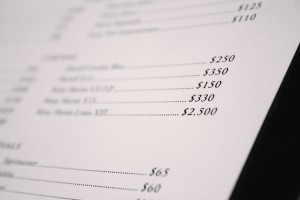 Not many things in life demand such elevated performance with such little preparation than ordering wine in an unfamiliar restaurant. Add to this a group of people relying on you for the evening’s success, a sassy server, and the professional pressures of the business meal and it’s enough to make even the most confident waver.
Not many things in life demand such elevated performance with such little preparation than ordering wine in an unfamiliar restaurant. Add to this a group of people relying on you for the evening’s success, a sassy server, and the professional pressures of the business meal and it’s enough to make even the most confident waver.
When you decide on a wine, you are then most likely going to be asked in front of clients to pronounce the name of a wine and region in a language that is not your own. This scenario happens daily in the business world as we treat our clients or potential clients to a dining experience.
A few years ago a friend and I were talking about what wines he orders with clients and his response was “The most expensive one on the list because I know I am safe.”
Rule No. 1 on business and wine ordering: Err on the side of frugality. The first impression should be you know enough about wine to make a reasonable selection. I’m not saying order the house wine and be done, but there are strategies to get the best bang for your buck.
Do your homework. Many restaurants post their wine lists on the restaurant’s website. Take a look at your options and prices before your lunch or dinner. You could even call ahead to see if they have any wine specials or suggestions for the size of your group. Just this small amount of research can alleviate some of the stress and make the ordering non-eventful.
Have a price in mind, keyed to the client you are entertaining. Most agree $20-$40 is a safe range in terms of choosing a wine of good quality while not being overindulgent with the company expenses.
Point with confidence. I am always prepared to point not only for the sommelier’s assistance but to avoid problems with pronunciation. The key is letting your wine server know you have a price in mind. “I am thinking about this wine …” “We are thinking about a white wine to get us started … this is one I am considering.” Point to the price, not the name of the wine.
Take control. Business meals are not the place to experiment, so keep a mental list of wines you know are food-friendly crowd pleasers. Safe bets include chardonnay, pinot grigio, merlot, pinot noir and cabernet sauvignon.
Respect your peers. If someone at the table is a senior in your company, you could easily and graciously pass on the wine-ordering to them. This not only comes across as a sign of respect, it gets you off the hook.
by Lorri | Mar 6, 2013 | UnCorked
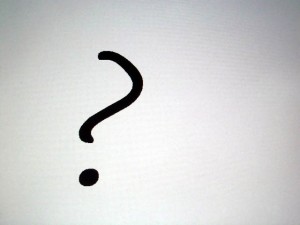 I always enjoy receiving reader feedback. Over the years I’ve received all kinds of notes from readers. Some are serious, others are funny and occasionally a reader will offer a solution to one of my questions.
I always enjoy receiving reader feedback. Over the years I’ve received all kinds of notes from readers. Some are serious, others are funny and occasionally a reader will offer a solution to one of my questions.
One of my favorites was just after a column on the up and coming glass closures. “Lorri, if the glass closure becomes more popular and used more, are you going to have to change the name of your column from Uncorked?” It made me smile.
I once read an article about the most frequently asked wine questions on Ask.com, a website that specializes in answering just about any question you can dream of (What is Twitter? What is the meaning of life? What is Miley Cyrus’ phone number?). I found the top wine questions interesting because they not only reflect what the general public wants to know about wine, they are also the same questions I most frequently get from Uncorked readers.
Here are the answers to a few of your most asked questions.
How do I remove red wine spills from my carpet?
I always keep a bottle of Wine Away on hand for stains. It’s the best remover I’ve found for carpet and upholstery and costs about $9 a bottle. Another option is to use paper towels to blot up as much of the stain as possible, then saturate the spot with cold water and then blot. Then, mix a paste of three parts baking soda to one part water and put over the spot. Let the paste dry, then vacuum.
How many calories are in a glass of wine?
Wine, like any alcohol, contains calories. Sweeter wines generally have more sugar, therefore more calories. Dry Riesling has about 90 calories; sauvignon blanc, chardonnay and pinot noir have about 95 for a 4-ounce glass. A 4-ounce glass of merlot has about 100 calories. Port has about 185 calories and Madeira has about 160 calories. A great resource for calorie and nutrition data on all matter of foods and beverages is the U.S. Department of Agriculture National Nutrient Database website, ndb.nal.usda.gov. The site allows you to search by specific grapes and different serving sizes.
How long does wine last once it’s opened?
Once a bottle of wine is opened, it immediately begins to deteriorate. A light-bodied white wine can spoil in as little as one day.Higher tannin structure can help slow this process, and red wine keeps a little longer than white. One thing you can do to preserve an open bottle is to replace the cork and keep in the refrigerator for about three days. If you remove the oxygen with products like Vacu Vin, it can last up to five days.
 Located in the heel of southern Italy’s boot, Puglia (known as Apulia in English) is undergoing a renaissance in wine production. Unfamiliar to many wine drinkers, the region is proving to be a great source of well-made wines with amazing value. These are a few of my notes after a recent tasting of this gem of Italian wines.
Located in the heel of southern Italy’s boot, Puglia (known as Apulia in English) is undergoing a renaissance in wine production. Unfamiliar to many wine drinkers, the region is proving to be a great source of well-made wines with amazing value. These are a few of my notes after a recent tasting of this gem of Italian wines. I am sure we could search century-old cellar journals and find early versions of the longstanding question of when is the best time to open a bottle of wine. It’s really rather a conundrum because if you pull the cork too early you’re left with a tannic, acidic wine. Open too late and most likely nothing is left except a dried-out fruitless wine. And worse, if you open years past the appropriate life of the wine you’re stuck with a bottle of vinegar.
I am sure we could search century-old cellar journals and find early versions of the longstanding question of when is the best time to open a bottle of wine. It’s really rather a conundrum because if you pull the cork too early you’re left with a tannic, acidic wine. Open too late and most likely nothing is left except a dried-out fruitless wine. And worse, if you open years past the appropriate life of the wine you’re stuck with a bottle of vinegar. I enjoy wine, but sometimes I am so intrigued by the story behind the bottles that the actual tasting takes second seat. Chateauneufdu-Pape is one of those stories, a worthy centerpiece for France’s southern Rhone, with its distinctly embossed bottle boasting the old papal coat of arms.
I enjoy wine, but sometimes I am so intrigued by the story behind the bottles that the actual tasting takes second seat. Chateauneufdu-Pape is one of those stories, a worthy centerpiece for France’s southern Rhone, with its distinctly embossed bottle boasting the old papal coat of arms. It’s hard to believe I have been writing Uncorked for eight years. I absolutely love sharing ideas each week, but more importantly I enjoy the feedback from you, the reader.
It’s hard to believe I have been writing Uncorked for eight years. I absolutely love sharing ideas each week, but more importantly I enjoy the feedback from you, the reader. Not many things in life demand such elevated performance with such little preparation than ordering wine in an unfamiliar restaurant. Add to this a group of people relying on you for the evening’s success, a sassy server, and the professional pressures of the business meal and it’s enough to make even the most confident waver.
Not many things in life demand such elevated performance with such little preparation than ordering wine in an unfamiliar restaurant. Add to this a group of people relying on you for the evening’s success, a sassy server, and the professional pressures of the business meal and it’s enough to make even the most confident waver. I always enjoy receiving reader feedback. Over the years I’ve received all kinds of notes from readers. Some are serious, others are funny and occasionally a reader will offer a solution to one of my questions.
I always enjoy receiving reader feedback. Over the years I’ve received all kinds of notes from readers. Some are serious, others are funny and occasionally a reader will offer a solution to one of my questions.